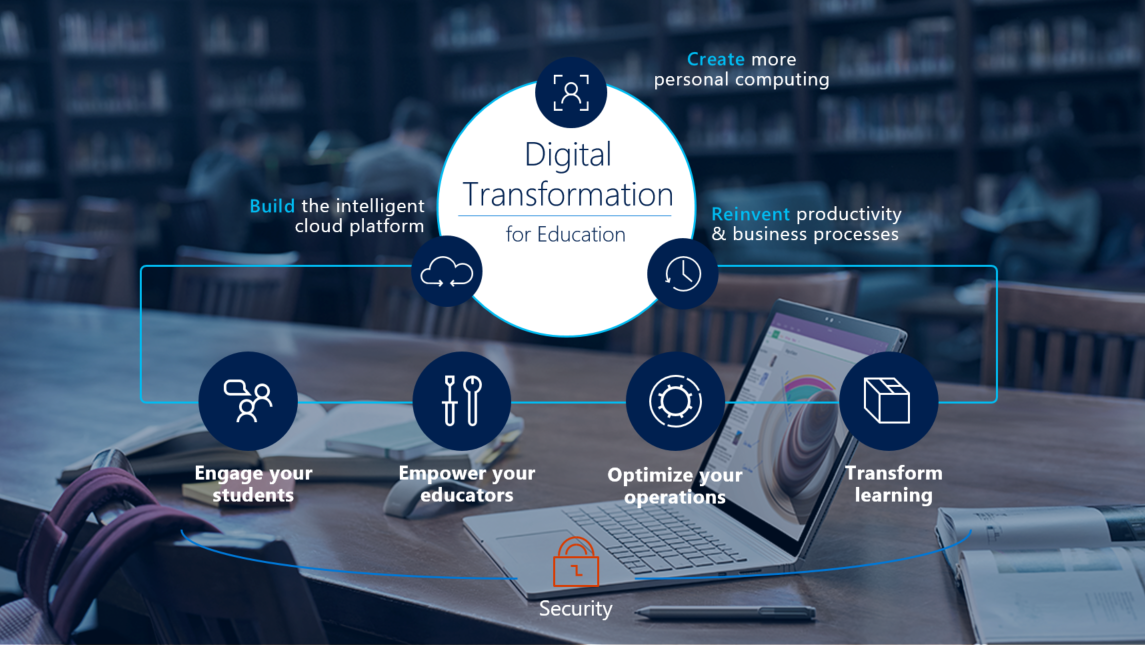The following is a LinkedIn story written by Ralph Haupter, President, Microsoft Asia
 When we consult the crystal ball of what our lives may look like in the next decade, chances are it’s a pretty exciting view: digital assistants that anticipate our needs, autonomous cars, even home appliances that are self-aware, from air-conditioners to refrigerators
When we consult the crystal ball of what our lives may look like in the next decade, chances are it’s a pretty exciting view: digital assistants that anticipate our needs, autonomous cars, even home appliances that are self-aware, from air-conditioners to refrigerators
However, in my conversations with government and business leaders across Asia Pacific, they are also keenly aware of some potential challenges of this digital future with issues such as job displacement, a growing “digital-divide” and increased risks from cyber-security threats.
What struck me recently was a quote by Klaus Schwab, Founder & Executive Chairman of World Economic Forum, who first put forth the notion that we are now entering the 4th Industrial Revolution. He said, “We stand on the brink of a technological revolution that will fundamentally alter the way we live, work, and relate to one another. In its scale, scope, and complexity, the transformation will be unlike anything humankind has experienced before.”
As a father of two school-going children, I am concerned about what the future holds for them as productive working adults. What sometimes keeps me thinking is this sobering, but fundamental, fact: 65% of children entering primary school today will end up working in completely new types of jobs, that don’t even exist yet. (Source: McLeod, Scott and Karl Fisch, “Shift Happens”).
Today, we don’t have nearly enough STEM (science, technology, engineering and mathematics) talents in the key roles that will help shape our digital future. In fact, if I brought a data scientist to every meeting that I have with business leaders across Asia Pacific, I am pretty sure that he/she might be hired on the spot to help solve data-related issues that almost every organization faces today.
When we apply the principle that the success of nations and organizations have, historically, been defined by their response to industrial revolutions, then the cultivating of both current and future STEM talents will determine the winners and losers in this current digital revolution.
And the future stakes in Asia Pacific are much higher than other regions globally, as Asia is home to around 717 million young people aged 15 to 24, comprising 60% of the world’s youth. (UN Economic and Social Commission for Asia and the Pacific)
On the positive side, improved digital skills are now being recognized as a real and vital imperative. Microsoft recently interviewed 1,500 business leaders across 13 Asian countries – as part of the Microsoft Asia Digital Transformation Study – to better understand where they are in their digital transformation journey. When asked to name the top barriers to their organisation’s successful digital transformation, the lack of a digitally-skilled workforce was the #1 barrier quoted, along with concerns over cyber security.
(Click here for more insights into this study)
At Microsoft, we are enabling organizations across all industries to transform themselves digitally, creating new possibilities to serve customers better, be more productive, optimize operations and create new products and services. While these outcomes are certainly relevant to the education sector, educators need to consider that their ultimate customers in this digital transformation journey are today’s youth.

With this in mind, here are some of the ways in which the education industry can better prepare our young people for the future digital workplace.
Developing a new learning paradigm. To start, there has to be recognition that the digital world has redefined the workplace as we know it, one that is increasingly global, service-based, and ultimately, staffed by a workforce that are also digital natives. Technology has enabled infinite new ways to collaborate, connect and share with people and ideas. It has disrupted industries by challenging traditional business models, and rendering old skill-sets less valuable.
So, when we think about the digital transformation of the education sector, educators need to boldly create a new learning paradigm, one that is relevant to digitally-savvy students, and able to build foundational skill-sets and mindsets needed to scale to new jobs yet to be defined, much less created.
Public/Private Partnerships. The burden on educators’ shoulders today is immense, and needs to be shared between educators and business. For example, education providers do not always provide training in the digital skills that employers are looking for, whilst the private sector often has the real-world experience and insights to identify digital skills shortages and drive educational best practices. Collaboration is key.
Embrace experimentation. For digital transformation to be successful in the education sector, leaders need to play a key role in creating a new learning environment which teachers can thrive in – one that embraces both innovation and risk-taking. Teachers need to be confident in trying out new pedagogic methods, yet feel safe enough to risk failure along the way. It is only through a blank canvas that teachers can start to forge new talents to fill the jobs of the future.
New mindset to languages as skills. I see a lot of education today focused on languages. Obviously, this is important – languages have provided the connective tissue between nations and organisations for thousands of years. That said, IT programming is also a language and one that will increasingly provide the cultural, societal and business foundation to enable the new digital era. However, “programming as a language” is not always well understood in education today, so is not always acted upon. Think about what the world might look like if every child could build their own app. and speak the one global language that everyone understands.
At Microsoft, I am proud of the work we do to bring the benefits of technology to everyone in Asia Pacific, especially those that are at risk of being left behind. Every year, we train 300,000 young people from underserved communities across the region (including women, people with disabilities, and ethnic minorities) with the problem-solving, critical-thinking and coding skills they need to build better careers and lives. In a society transformed by technology, we know these skills will be the essential tools needed to innovate, pursue in-demand jobs, and understand the world around them.
So the question that I ask of ourselves as technology providers and educators everywhere is: “How do we empower every student on the planet to achieve more?
Do share your thoughts with me.
Ralph Haupter





